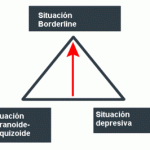Mental health articles
OF mental health care and mentally ill
Somatization and Associated Psychopathology
Somatization and Associated Psychopathology
Given the heterogeneous nature of somatization disorder, the process of somatization is associated with a spectrum of affective, personality, and thought disorders. In a large community study (N = 11,519), 24.6% of respondents experienced the co-occurrence of somatization disorder and depression. From this same study, individuals with somatization disorder also had a 96.5% chance of having panic disorder and a 27.3% risk of having agoraphobia. In examining 100 consecutive somatizing patients, Katon, Ries, and Kleinman noted that somatizers were more likely to suffer from depression (48%), personality disorder (37%), psychogenic pain disorder (11%), psychophysiological illness (9%), and panic disorder (4%) than a nonsomatizing group referred for psychiatric consultation. Sixtyone percent of females and 33% of males in a sample of fifty-five panic disorder cases displayed somatization. The prevalence of somatization disorder in the presence of other DSM-IV Axis I and Axis II disorders has been documented in the context of epidemiological studies, as well as in studies of primary care facilities. Brown, Golding, and Smith calculated lifetime prevalence rates for comorbid disorders in 119 DSM-III-R somatization patients referred to primary care physicians. The most prevalent comorbid diagnoses were major depression (54.6%), generalized anxiety disorder (33.6%), phobic disorders (31.1%), panic disorder (26.0%), and alcohol abuse/dependence (21.0%). In a study by Sheehan and Sheehan, 71%of patients with agoraphobia met the criteria for Briquet’s syndrome. The results of Orenstein’s examination of 188 consecutive female psychiatric patients indicated that Briquet’s syndrome was associated with a lifetime history of major depression (81%) and a lifetime history of spontaneous panic attacks (69%). Orenstein commented that his results were consistent with a shared diathesis hypothesis underlying some cases of major depression, panic disorder, agoraphobia, and Briquet’s syndrome.
Moreover, Briquet’s syndrome may represent the most extreme expression of a proclivity for physical and psychological syndromes to aggregate. As part of a large epidemiological study of psychiatric disorders in a community sample of 3783 participants, 77.7% of the sixteen participants with somatization disorder met another concurrent psychiatric diagnosis, compared to 9.7% of patients with a dual diagnosis who did not have somatization disorder. The most frequent concurrent diagnoses with somatization disorder included simple phobia (70%), major depression (65%), agoraphobia (64%), obsessive-compulsive disorder (52%), panic disorder (42%), schizophrenia (38%), atypical bipolar disorder (35%), social phobia (30%), alcohol abuse and dependence (17% each), and dysthymia (16%). Whether somatization disorder produces other psychiatric disorders is not known, but as Swartz et al. noted, by definition, individuals who endorse a plethora of symptoms to yield a diagnosis of somatization disorder are also more likely to endorse other physical and psychological symptoms at a high rate. Liskow and his associates found a lifetime prevalence of depression in 87%, panic disorder in 45%, and phobic disorder in 39% of seventy-eight women diagnosed with somatization disorder.
In addition, the prevalence of other psychiatric disturbances was considerable and included the following: obsessive-compulsive disorder (27%), schizophrenia (27%), drug dependence (23%) and drug abuse (17%), and antisocial personality disorder (17%). Using a genetic-epidemiological approach to examine the comorbidity of panic and somatization disorder, 159 outpatients with DSM-III-R panic disorder and seventysix surgical controls were screened for the lifetime presence of DSM-III-R somatization. The investigators found that 23% of women and 5% of men with panic disorder also had somatization disorder at one time. The authors also concluded that panic disorder and somatization disorder may coexist without sharing a common genetic diathesis and that the DSM-IV criteria for somatization disorder are simpler than the DSMIII-R criteria. Along similar lines, in a DSM-IV posttraumatic stress disorder field trial involving 395 traumatized subjects, a strong relationship was evidenced among reports of posttraumatic stress disorder, dissociation, and somatization. The relationship of histrionic personality disorder and antisocial personality disorder to somatization disorder, as well as the relationship between hysteroid and obsessive features and Briquet’s syndrome, has been similarly documented. Hudziak, Boffeli, Kriesman, Battaglia, Stanger, and Guze conducted a multisite study that examined the relationship of borderline personality to Briquet’s syndrome (hysteria), somatization disorder, antisocial personality disorder, and substance abuse disorders in eighty-seven women (seventy-five from St. Louis and twelve from Milan) who met DSM-III-R borderline personality disorder. Patients were further examined with the DSM-III-R Checklist and the Perley–Guze Hysteria Checklist. Results indicated that every patient had at least one additional DSM diagnosis and patients from St. Louis and Milan averaged f ive and four additional diagnoses, respectively. Eighty-four percent of the St. Louis sample met criteria for somatization disorder, Briquet’s syndrome, antisocial personality disorder, and substance abuse disorders. Patterns of comorbidity included major depression (87%), generalized anxiety disorder (55%), and panic disorder (51%). Two other studies looked at the prevalence of personality disorders and somatization disorder. Rost, Akins, Brown, and Smith evaluated thirteen personality disorders with the Structured Clinical Interview in ninety-four subjects with DSM-III-R somatization disorder from multiple primary care settings. The data indicated that 23.4% of somatization disorder cases had one personality disorder and 37.2% had two or more personality disorders.
The four most common personality disorders included avoidance (26.7%),paranoia (21.3%), self-defeating (19.1%), obsessivecompulsive (17.1%), and, interestingly enough, histrionic personality disorder (12.8%) and antisocial personality disorder (7.4%). In a small British sample, twenty-five women with somatization disorder were compared to a control group (clinical patients but without somatization disorder) of 25 women using the Personality Assessment Schedule. The prevalence of personality disorders among the somatization disorder group was 72%, compared to 36% in the control group.
In sum, physical and psychological symptoms are common and often co-occur in the same individual. Although considerable data support somatization disorder, there should be concerns when a clinical condition overlaps with many other DSM-IV disorders. Somatization disorder is associated with so many things that it runs the risk of having little discriminatory clinical value.
Post Footer automatically generated by wp-posturl plugin for wordpress.
More from my site
Tags: psychopathology, somatization








Leave a Reply